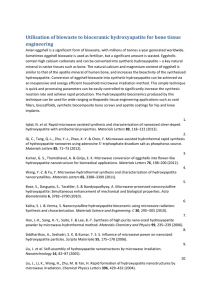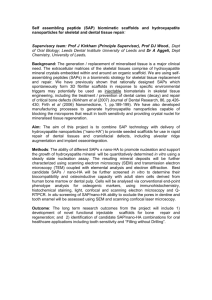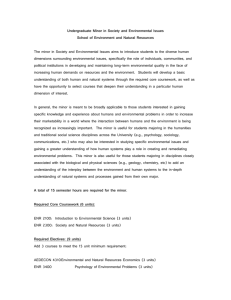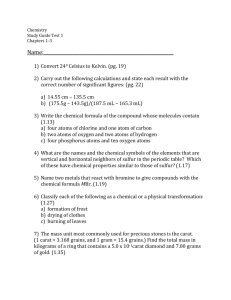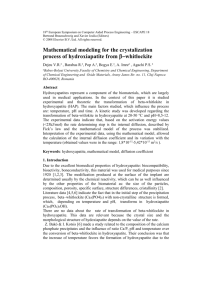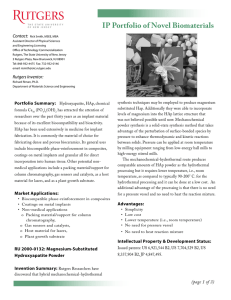Homework 4
advertisement
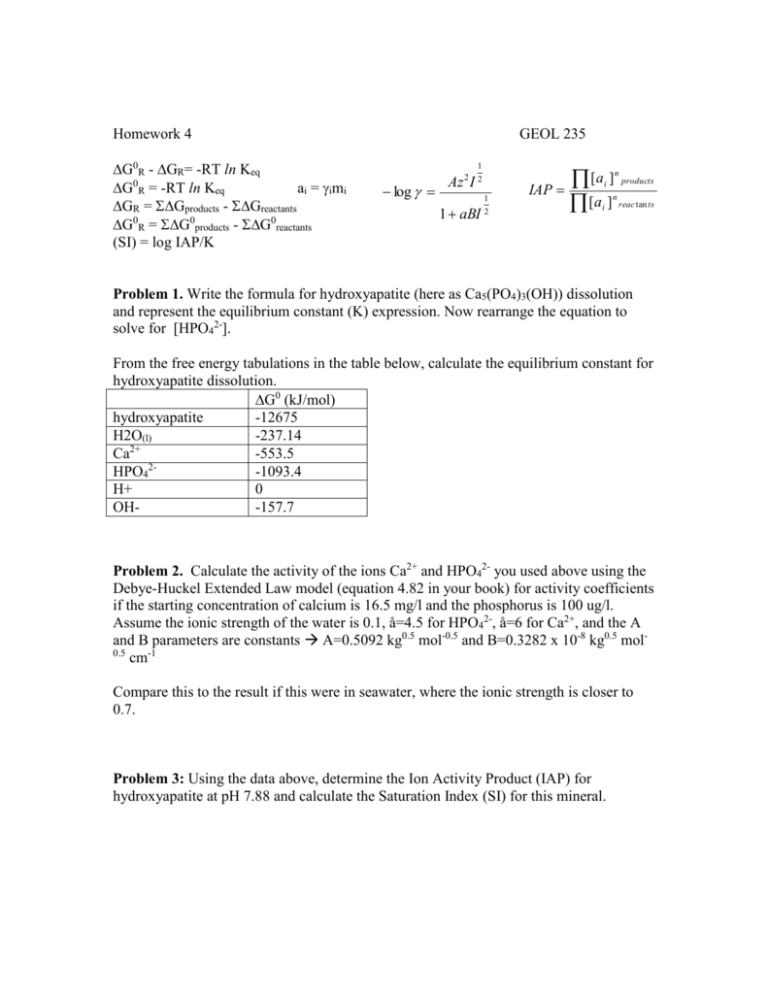
Homework 4 G0R - GR= -RT ln Keq G0R = -RT ln Keq ai = imi GR = Gproducts - Greactants G0R = G0products - G0reactants (SI) = log IAP/K GEOL 235 log 2 Az I 1 2 1 1 aBI 2 IAP [a ] [a ] n i n i products reac tan ts Problem 1. Write the formula for hydroxyapatite (here as Ca5(PO4)3(OH)) dissolution and represent the equilibrium constant (K) expression. Now rearrange the equation to solve for [HPO42-]. From the free energy tabulations in the table below, calculate the equilibrium constant for hydroxyapatite dissolution. G0 (kJ/mol) hydroxyapatite -12675 H2O(l) -237.14 2+ Ca -553.5 HPO42-1093.4 H+ 0 OH-157.7 Problem 2. Calculate the activity of the ions Ca2+ and HPO42- you used above using the Debye-Huckel Extended Law model (equation 4.82 in your book) for activity coefficients if the starting concentration of calcium is 16.5 mg/l and the phosphorus is 100 ug/l. Assume the ionic strength of the water is 0.1, å=4.5 for HPO42-, å=6 for Ca2+, and the A and B parameters are constants A=0.5092 kg0.5 mol-0.5 and B=0.3282 x 10-8 kg0.5 mol0.5 cm-1 Compare this to the result if this were in seawater, where the ionic strength is closer to 0.7. Problem 3: Using the data above, determine the Ion Activity Product (IAP) for hydroxyapatite at pH 7.88 and calculate the Saturation Index (SI) for this mineral. Problem 4: Using the PHREEQ geochemical modeling software available online at: http://www.ndsu.edu/webphreeq/ and the data below, input the values below for an advanced speciation of a single solution using the PHREEQC database and in step 3 run a full output. Missisquoi bay water units ppm pH 7.88 (fixed) pe 8.0 temp 18.8 Ca 16.5 Mg 4.0 Na 9.02 K 1.2 Si 0.9 Cl 13.8 Alkalinity 49.2 S 4.2 (as SO4-2) Fe 0.025 P 0.100 N 0.397 (as NO3-) Compare the activities of HPO42- and Ca2+ with your results in Problem 2 and the SI for hydroxyapatite calculated in Problem 3.
